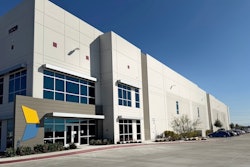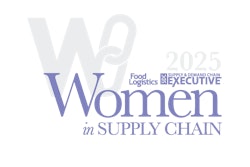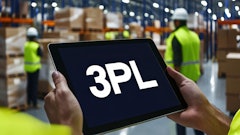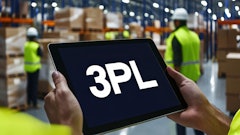
As automation and artificial intelligence (AI) continue to transform the logistics industry, logistics professionals and supply chain managers looking for technology partners have a wealth of options. This shift is particularly vital for enterprises working with third-party logistics (3PL) providers.
From automating shipment visibility to enhancing cross-border operations, every aspect of logistics can benefit from cutting-edge technology. But with so many solutions on the market, how do shippers ensure they’re partnering with the right 3PL to ensure safety, efficiency, and profitability? By examining the most valuable applications of AI and automation, shippers can choose the 3PL best positioned to enhance their daily operations while future-proofing their business.
Streamlining operations with automated shipment visibility
Consumers expect real-time updates on deliveries from online purchases and pizza orders. For businesses, visibility is even more vital, as delays can mean lost revenue and dissatisfied clients. Carriers and 3PLs that use AI-driven solutions for shipment tracking and visibility can provide essential real-time data to ensure both customer expectations and revenue goals are met.
End-to-end visibility, for instance, allows supply chain managers to access real-time updates directly from drivers’ Electronic Logging Devices (ELDs), GPS, or even cell phones. AI integrations take visibility one step further by scraping carrier websites for tracking updates, automating status retrieval without requiring additional resources.
With real-time insights, businesses can address potential delays before they impact customers. Transparent updates build trust and improve relationships with end-users. And by automating tracking, time spent on manual check-ins is redeployed to higher-value tasks. This level of visibility not only aligns business outcomes with customer expectations but also serves as the foundation for operational excellence across the entire supply chain. Ergo, integrations that facilitate visibility are a key factor in gauging whether a potential 3PL partner can meet the evolving needs of both the shipper and the market.
Better carrier management with AI and fraud protection
Logistics managers face the immense challenge of assessing carrier reliability and mitigating fraud risks. AI-powered identity management tools are tackling these challenges with precision. Their AI systems go beyond basic carrier qualification processes, analyzing deep data points to create a 360-degree view of carrier identity. This not only ensures carriers have proper compliance, insurance, and certifications, but also proactively prevents fraudulent activities, such as spoofed emails or deceptive phone calls.
When vetting 3PL partners, shippers should prioritize companies using such advanced carrier management systems. They ensure that shipments are in safe hands while minimizing risks that could jeopardize supply chain integrity.
Additional features like sustainability tracking—like monitoring SmartWay or CARB compliance—add an additional layer of value, allowing businesses to align their logistics strategy with growing environmental expectations. As global regulations surrounding sustainability initiatives grow more stringent, what was once a nice-to-have feature is now a must-have for 3PLs and shippers.
Cross-border shipping customization
Cross-border logistics require an additional set of competencies. From currency differences to compliance with regional regulations, companies need tailored solutions to manage these challenges smoothly.
Modern transportation management systems (TMS) have evolved to cater to these requirements. Customized systems seamlessly convert between miles and kilometers, handle multi-currency transactions, and ensure shipments meet security standards like CTPAT compliance.
This combination of technology and partnerships significantly reduces shipment delays, improves capacity utilization, and ensures supply chains remain efficient in a globalized market.
A strategic 3PL partnership should account for multi-country TMS functionality that adapts geospatially for regulatory compliance, AI-supported route optimization for faster, more cost-effective cross-border deliveries, and strategic integrations with reliable partners to unlock and manage carrier capacity.
Automating back-office workflows
Back-office tasks such as quoting, invoicing, and appointment scheduling consume valuable worker hours while leaving room for human error. Automation, when paired with AI, transforms these workflows and allows shippers to allocate their internal resources towards higher-impact work.
When shippers partner with a 3PL that provides back-office task automation, AI can read shipment requests from customer emails and pull data into TMS systems automatically, reducing manual keystrokes. Documents such as Proof of Delivery (PODs) can be retrieved and sent with the click of a button through AI-powered filing systems. Exception signals in billing can be flagged automatically, streamlining approval processes.
Solutions designed to optimize internal operations provide logistics workflows with these capabilities, creating efficiencies that allow shippers to focus on strategic growth rather than low-value tasks. 3PLs that can boast tools like these in their tech stack offer their clients benefits that extend well beyond the traditional tasks of shipping and monitoring.
Choosing the right 3PL partner
Not all 3PLs are created equal. The right partner understands that a successful logistics strategy isn’t powered by technology alone— it’s about how that technology is deployed and customized to meet the shipper’s unique requirements.
When considering a new partnership, shippers should keep an eye out for 3PLs that offer technology solutions that will support their growth and streamline their operations. Key offerings include:
- Tech-driven innovation. Advanced systems like API-driven TMS platforms that integrate seamlessly.
- AI capabilities. From shipment visibility to fraud prevention, AI integration is essential for modern logistics efficiency.
- Cross-border expertise. Ensure your partner has expertise in international shipping, with systems that adapt to global regulations.
- Sustainability commitments. Prioritize partners investing in tools and certifications aimed at reducing environmental impact.
Final thoughts
Automation and AI are paving the way for a smarter, more efficient logistics industry. For shippers and logistics managers, partnering with 3PLs that leverage these technologies isn’t just a competitive advantage— it’s becoming an operational necessity. Shippers should consider carefully what a potential 3PL partner can provide in terms of technology solutions that can be truly transformative to their overall operations.
![Pros To Know 2026 [color]](https://img.sdcexec.com/mindful/acbm/workspaces/default/uploads/2025/08/prostoknow-2026-color.mduFvhpgMk.png?auto=format%2Ccompress&bg=fff&fill-color=fff&fit=fill&h=100&q=70&w=100)



![Pros To Know 2025 [color]](https://img.sdcexec.com/files/base/acbm/scn/image/2025/01/Pros_To_Know_2025__color_.67856cb23da64.png?auto=format%2Ccompress&fit=crop&h=167&q=70&w=250)



![Pros To Know 2026 [color]](https://img.sdcexec.com/mindful/acbm/workspaces/default/uploads/2025/08/prostoknow-2026-color.mduFvhpgMk.png?ar=16%3A9&auto=format%2Ccompress&bg=fff&fill-color=fff&fit=fill&h=135&q=70&w=240)








